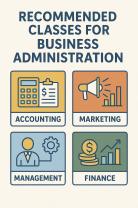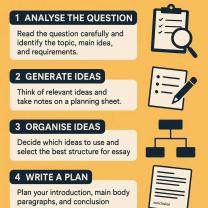Why technology is bad in schools?
While technology in schools has become increasingly prevalent and offers various benefits, there are concerns and criticisms regarding its integration. It's important to note that these concerns do not universally apply to all situations, and there are varying perspectives on the matter. Here are some common concerns raised about the use of technology in schools:
Distraction and Lack of Focus:
- One of the primary concerns is that technology, such as smartphones and tablets, can be a source of distraction for students. Social media, games, and other non-educational content can divert students' attention away from learning.
Social Isolation:
- The use of technology might contribute to social isolation, as students may spend more time interacting with screens than with their peers. This could potentially hinder the development of crucial social skills.
Inequality:
- Not all students have equal access to technology outside of school. Economic disparities may lead to a "digital divide," where some students have access to the latest devices and high-speed internet at home, while others do not. This can exacerbate educational inequalities.
Dependence on Screens:
- Concerns have been raised about the overreliance on screens for learning. Excessive screen time can have negative effects on eyesight, physical health, and overall well-being.
Cybersecurity and Privacy Issues:
- The use of technology in schools requires careful consideration of cybersecurity and privacy concerns. There is a risk of sensitive student data being compromised, leading to potential breaches of privacy.
Lack of Personal Interaction:
- Some argue that technology may replace traditional face-to-face interactions between students and teachers, potentially diminishing the quality of personal connections and the teacher-student relationship.
Questionable Educational Value:
- Critics argue that not all technology used in schools is pedagogically sound. Some educational apps or software may lack proven effectiveness, and the focus on technology could divert resources from other proven teaching methods.
Health Concerns:
- Prolonged use of technology can contribute to health issues such as eyestrain, poor posture, and sedentary behavior. Critics express concerns about the long-term impact of technology on students' physical well-being.
It's important to acknowledge that many of these concerns can be addressed through thoughtful planning, proper implementation, and ongoing evaluation of technology use in educational settings. Additionally, technology can offer numerous benefits, such as personalized learning opportunities, access to a wealth of information, and preparation for the digital skills required in the modern workforce. Striking a balance and implementing technology in a purposeful and mindful manner is crucial to maximizing its positive impact in schools.
While technology offers many benefits in education, there are also potential drawbacks to consider. Here's a breakdown of your questions:
1. Drawbacks of technology in schools:
- Distraction: Social media, games, and other online content can easily pull students' attention away from their studies, hindering learning and focus.
- Digital divide: Not all students have equal access to devices and internet connectivity, creating an uneven playing field and potentially exacerbating existing inequalities.
- Technophobia and lack of training: Some teachers or students may struggle with using technology effectively in the classroom, hindering its positive impact.
- Privacy and security concerns: Data breaches, online predators, and cyberbullying are potential risks associated with technology use in schools.
- Cost: Equipping schools with technology and maintaining it can be expensive, placing a strain on budgets.
- Overreliance on technology: Technology should be a tool to enhance learning, not a replacement for traditional methods like critical thinking, creative problem-solving, and social interaction.
2. Impact of excessive technology use on student learning and development:
- Attention problems: Studies suggest excessive screen time can contribute to shorter attention spans and difficulty focusing.
- Sleep disruption: Blue light emitted from screens can interfere with sleep patterns, impacting cognitive function and memory.
- Physical health issues: Excessive sitting and lack of physical activity associated with screen time can lead to obesity and other health problems.
- Mental health concerns: Cyberbullying, exposure to inappropriate content, and social media pressure can contribute to anxiety, depression, and other mental health issues.
- Reduced creativity and critical thinking: Overreliance on technology for information and entertainment might hinder independent thinking and creative problem-solving skills.
3. Concerns about the impact of technology on social skills in school:
- Limited face-to-face interaction: Excessive reliance on online communication can limit opportunities for students to develop essential social skills like empathy, nonverbal communication, and conflict resolution.
- Cyberbullying and social isolation: Online interactions can be more impersonal and lead to cyberbullying or social isolation, impacting students' emotional well-being.
- Difficulty reading social cues: Spending too much time online can make it harder for students to read facial expressions, body language, and other social cues, hindering their ability to navigate social situations effectively.
It's important to remember that technology is a tool, and like any tool, it has both positive and negative aspects. The key is to use it responsibly and strategically in education, fostering a balanced approach that leverages its benefits while mitigating its potential drawbacks. By implementing clear guidelines, promoting responsible digital citizenship, and prioritizing social interaction alongside technology-mediated learning, schools can create a safe and effective environment for students to thrive in the digital age.












